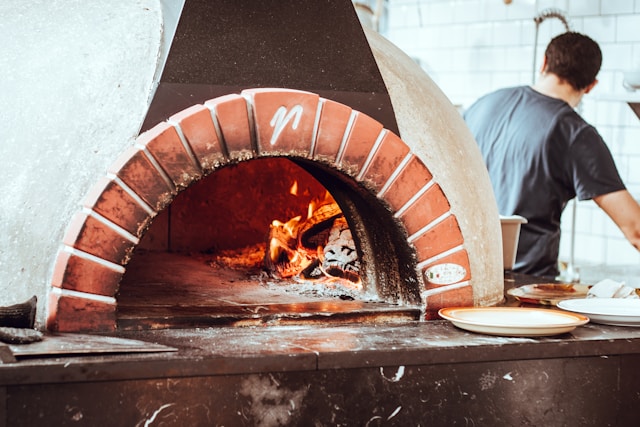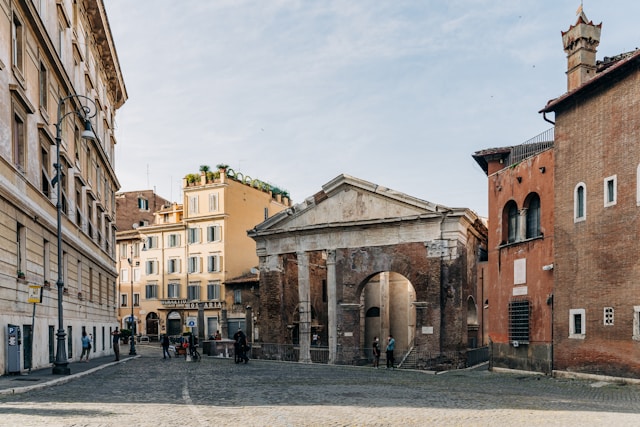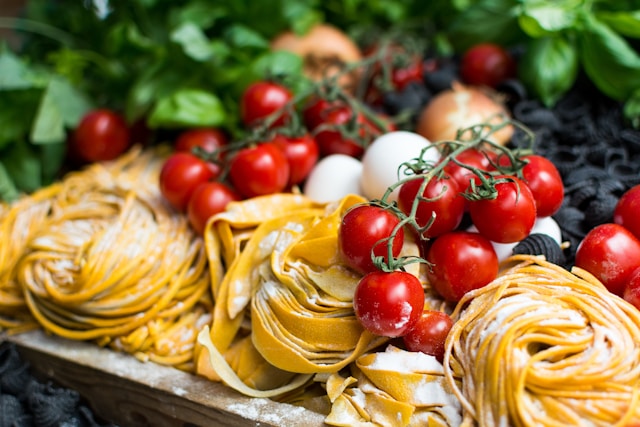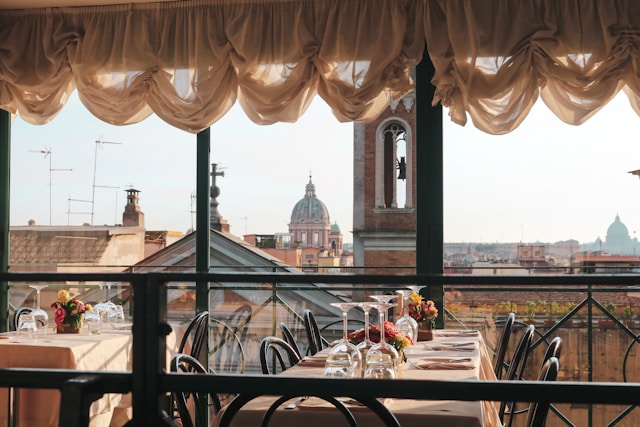Rome, known for its rich history, stunning architecture, and delectable cuisine, has been rapidly embracing the global trend of veganism.
The Romans were pioneers in transforming simple ingredients into exquisite meals, influencing culinary traditions that still resonate today. Their diet was a fascinating mix of familiar tastes and exotic flavors brought together from the far reaches of the Roman Empire.
The Role of Food in Ancient Rome’s Cultural and Religious Life

Exploring these aspects of ancient Roman life can offer a fascinating glimpse into a world where food was more than just sustenance. It was a reflection of one’s identity and place in society. A guided Rome food tour can provide a deeper understanding of these historical connections, allowing visitors to experience the past through the lens of food.
Social Significance
In ancient Roman society, food delineated class, status, and power. The prerogatives of the wealthy were lavish feasts with exotic dishes and fine wines. For the common people, meals were simpler, yet they carried a sense of community and belonging.
Religious and Ceremonial Aspects of Dining
Beyond mere sustenance, food in ancient Rome played a role in religious and ceremonial contexts. Sacrifices of grains, fruits, and livestock to the gods were integral to festivals, rites, and public celebrations, embodying gratitude and devotion.
Perspectives on Health and Nutrition
The Romans understood the intrinsic link between diet and well-being. Medical texts from the period highlight the importance of balance, moderation, and the nutritional values of different foods.
Physicians like Galen theorized about the humors of the body, prescribing diets to maintain or restore health. This holistic view emphasizes the ancient belief in food as the first medicine, which resonates even today.
Understanding Veganism in Rome

Veganism, once considered a niche, has seen a significant rise in Rome in recent years. This shift is driven by a growing awareness of animal welfare, environmental concerns, and health benefits. To meet this demand, Rome’s food industry has adjusted and is now home to a wide variety of vegan options.
Rome’s culinary landscape is deeply rooted in tradition yet embraces innovation. Vegan chefs draw inspiration from the city’s cultural heritage, incorporating local flavors, ingredients, and cooking methods into their plant-based creations. This fusion results in dishes that pay homage to Rome’s culinary legacy while catering to modern dietary preferences.
With dishes that ranged from the simple pleasures of bread dipped in wine and olives to extravagant banquets featuring peacock and dormice, this culinary tradition set the stage for modern gastronomy. These culinary treasures, refined over centuries, reflect the sophistication and complexity of Roman society itself.
Exploring Vegan-Friendly Neighborhoods
Navigating Rome’s diverse neighborhoods offers a glimpse into the city’s vibrant vegan scene.
Trastevere: This historic district, with its cobblestone streets and traditional charm, hosts several vegan eateries. From cozy cafes serving vegan pastries to restaurants offering plant-based takes on classic Roman dishes, Trastevere blends tradition with innovation.
Testaccio: Once Rome’s ancient food district, Testaccio now boasts a burgeoning vegan scene. Visitors can explore the local market for fresh produce and vegan-friendly snacks or indulge in authentic Roman cuisine with a plant-based twist.
Monti: Known for its trendy boutiques and vibrant nightlife, Monti is a hotspot for vegan dining. Stylish cafes offer plant-based brunches, while upscale restaurants serve gourmet vegan cuisine, making it a must-visit for vegan foodies.
Vegan-Friendly Traditional Roman Dishes

While Rome is famous for its traditional Italian cuisine, many classic dishes can be adapted to suit a vegan diet.
Cacio e Pepe: This traditional Roman pasta dish, typically made with cheese and black pepper, can be veganized using dairy-free cheese and plant-based cream.
Pizza Marinara: A classic Neapolitan pizza topped with tomato sauce, garlic, oregano, and olive oil, making it naturally vegan and widely available in Rome.
Supplì: These fried rice balls filled with cheese, tomato sauce, and sometimes meat can be veganized by using dairy-free cheese and vegetable fillings.
Unveiling the Vegan Culinary Landscape of Ancient Rome

Ancient Roman cuisine was a rich tapestry of flavors, ingredients, and techniques that continue to inspire modern cooking, even for those embracing a vegan lifestyle. Here’s a closer look at the ancient vegan culinary scene in Rome:
Roman Society and Culinary Traditions
Dining in ancient Roman society was both a necessity and an art form. While elaborate feasts were common among the wealthy, even everyday meals for the common folk were imbued with the essence of Roman culinary traditions, albeit in simpler forms.
Common Vegan Ingredients and Flavors
Despite the abundance of meat-centric dishes, the Roman pantry boasted a variety of vegan staples. Grains like wheat and barley formed the backbone of many dishes, while olives and grapes were not only enjoyed as fruits but also used in the production of olive oil and wine, respectively.
A Palette of Vegan Flavors
The Roman palate embraced a spectrum of tastes, from sweet to sour, and umami, all achieved through the creative use of plant-based ingredients. Herbs such as coriander, mint, and rosemary added depth to dishes. Sauces were enriched with flavors akin to modern-day umami, utilizing ingredients like fermented soybean paste.
Cooking Techniques and Culinary Innovations
Roman culinary techniques were both practical and pioneering. They employed baking, boiling, frying, and stewing methods, often utilizing innovative kitchen tools. Among these was the testum, an earthenware pot that allowed for slow cooking, intensifying the flavors of vegan dishes without the need for animal products.
Vegan-Friendly Attractions and Activities

Vegan Food Tours: There are many excellent food tours in Rome that highlight the city’s best plant-based eateries and hidden gems. Most places now offer vegan options, but make sure to confirm before booking.
Cooking Classes: Learn to cook vegan Italian dishes with hands-on cooking classes that showcase traditional recipes with a modern twist.
Green Spaces: Relax in Rome’s parks and gardens with vegan picnic options, providing a tranquil escape from the bustling city streets.
In conclusion, Vegan Rome offers a diverse and thriving plant-based dining scene that caters to locals and visitors alike. From traditional Italian cuisine to innovative vegan creations, Rome’s culinary offerings reflect a commitment to sustainability, ethics, and culinary excellence. Whether you’re a seasoned vegan or just starting your plant-based journey, Vegan Rome promises a culinary adventure. It celebrates the flavors of Italy while embracing the principles of compassion and sustainability.
Interested in more vegan reading? Check out our blog post on the best vacation destinations for vegans or vegan restaurants in Copenhagen!
